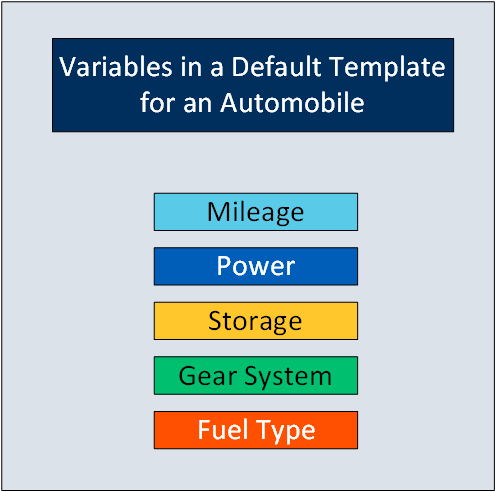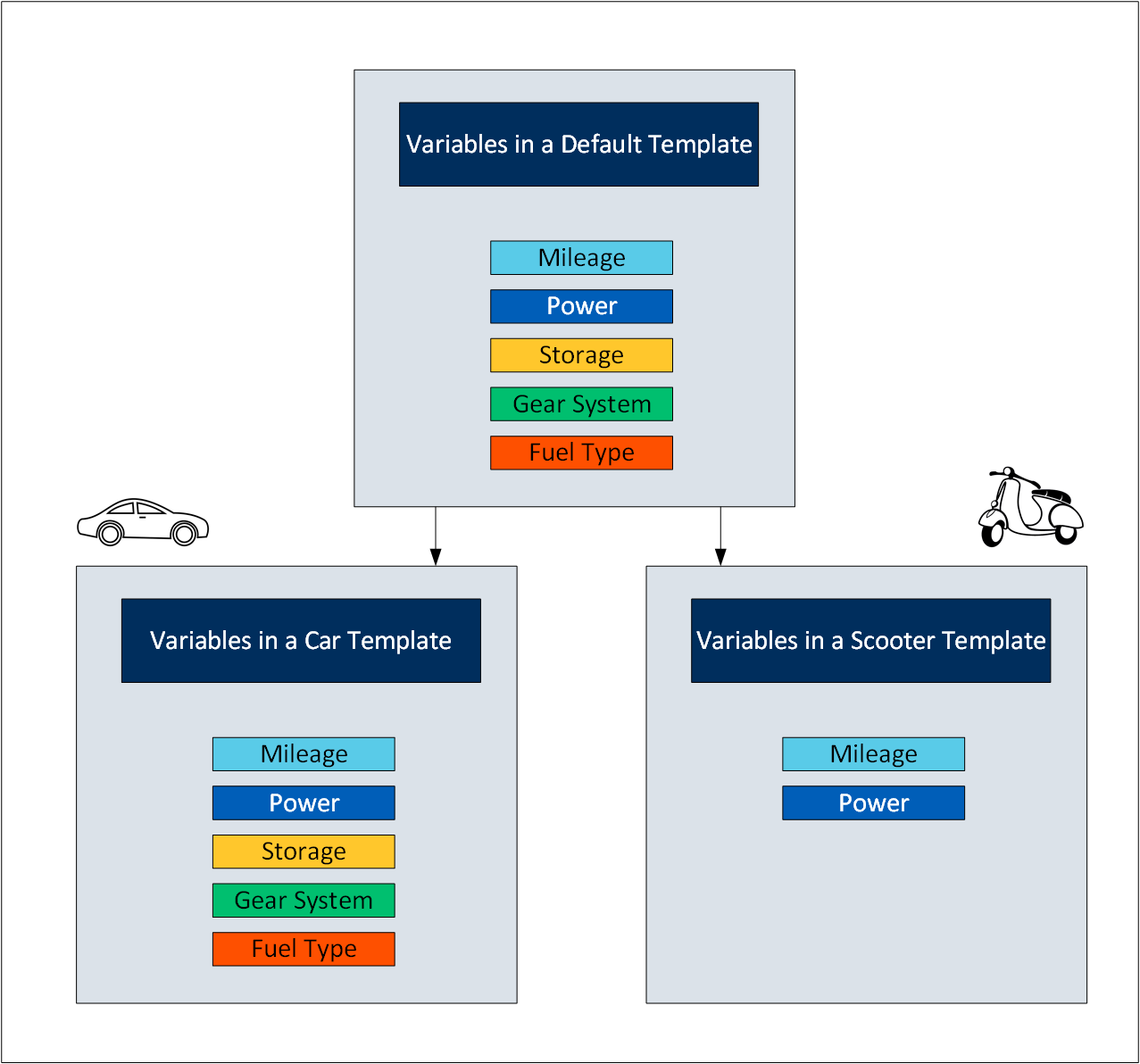About Object Templates
When you create an object type, you create a template. A template contains attributes/properties of an object type, called variables. When you apply a template to an object instance, the variables included in the template are added to the object instance.
- Default Template: The default template contains generic/common variables of an object type. Each object type contains one and only one default template; you cannot delete it.
- Custom Template: In addition to the default template, if needed, you can create one or more custom templates for an object type. When you do so, you can choose to include variables from the default template or other custom templates in the same object type.


When you later create instances of the object type, you can choose any of the three templates. When you do so, all the variables in the template are included in the object instance. You will then capture values of these variables in Historian.